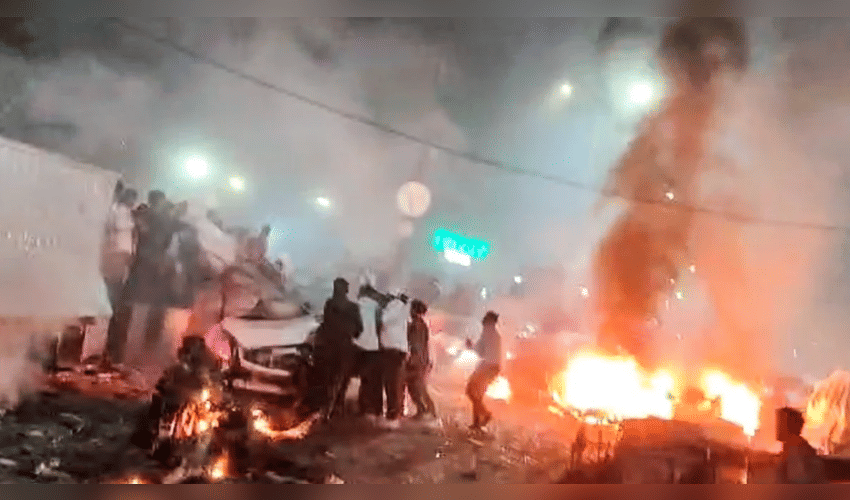Asia In News
From Surat to Kashmir, Faridabad to Delhi: Tracing the Terror Trail Behind the Red Fort Blast

A recent blast near Delhi’s iconic Red Fort has sent shockwaves across the capital, raising urgent questions about a possible terror link that connects multiple cities—Surat, Kashmir, Faridabad, and Delhi. In a tragic incident that left nine dead and around twenty injured, a Hyundai i20 car exploded near the Red Fort Metro Station, igniting numerous vehicles and causing significant destruction in a crowded area. Authorities have expanded the investigation beyond the blast site, uncovering a potential trail of terror that crosses state lines and involves several arrests of individuals linked to militant activities.
The investigation revealed that the exploded vehicle was linked to a network involving suspects from Jammu and Kashmir, Gujarat, and Haryana. One significant discovery was the arrest of a Kashmiri doctor in Faridabad, Haryana, where police seized nearly 3,000 kilograms of explosives, including 350 kilograms of ammonium nitrate—a substance commonly used in bomb-making. This doctor was part of a broader terror cell, which also included individuals who had access to weapons and even materials related to bioweapons like ricin, as evidenced by another arrest of a Gujarat doctor.
Adding to the complexity, another suspect from Jammu and Kashmir was detained in Uttar Pradesh for allegedly spreading propaganda supporting the Pakistan-based terrorist group Jaish-e-Mohammed. These seemingly separate arrests from Surat in Gujarat, Kashmir, Faridabad in Haryana, and Uttar Pradesh reveal how terrorists may be operating across multiple regions with coordinated objectives.
Security forces have placed Delhi and other key states on high alert, tightening security at major public and religious sites. For example, Maharashtra has fortified its defenses at pilgrimage sites such as Shirdi and Shegaon, with thorough vehicle inspections and increased police presence. Meanwhile, forensic teams and antiterror units including the NIA (National Investigation Agency) and NSG (National Security Guard) are deeply involved in piecing together the chain of events that culminated in the blast. The car used in the attack was parked at the Red Fort vicinity for several hours before the explosion, pointing to a premeditated and planned strike, as confirmed by CCTV footage. The incident highlights the evolving nature of terror threats facing India, where cross-regional terror modules are increasingly connecting cities like Surat—a commercial hub, Kashmir—a conflict zone, and Delhi—the nation's capital.
The blast serves as a grim reminder of the importance of intel sharing across states, robust investigative processes, and swift security responses to nip terror threats in the bud. The interplay of arrests, seizures, and bombings suggests a concerted effort by terror outfits to strike symbolic landmarks, underscoring the need for heightened vigilance and counterterrorism cooperation across India. This multi-city terror connection in the aftermath of the Red Fort blast is a wake-up call for security agencies to deepen surveillance, strengthen intelligence networks, and secure public spaces, ensuring that the nation stands united against such coordinated threats to peace and safety. By tracing the links from Surat to Kashmir, Faridabad to Delhi, this incident sheds light on the sophisticated and wide-reaching terror networks working to destabilize the country, and the persistent efforts by Indian authorities to dismantle these threats before more lives are lost.



